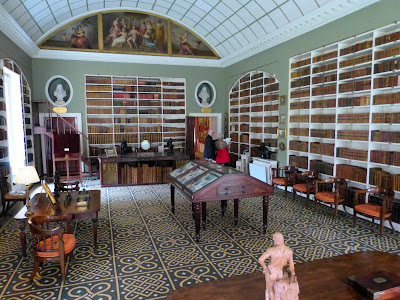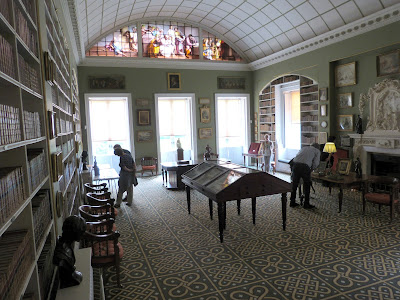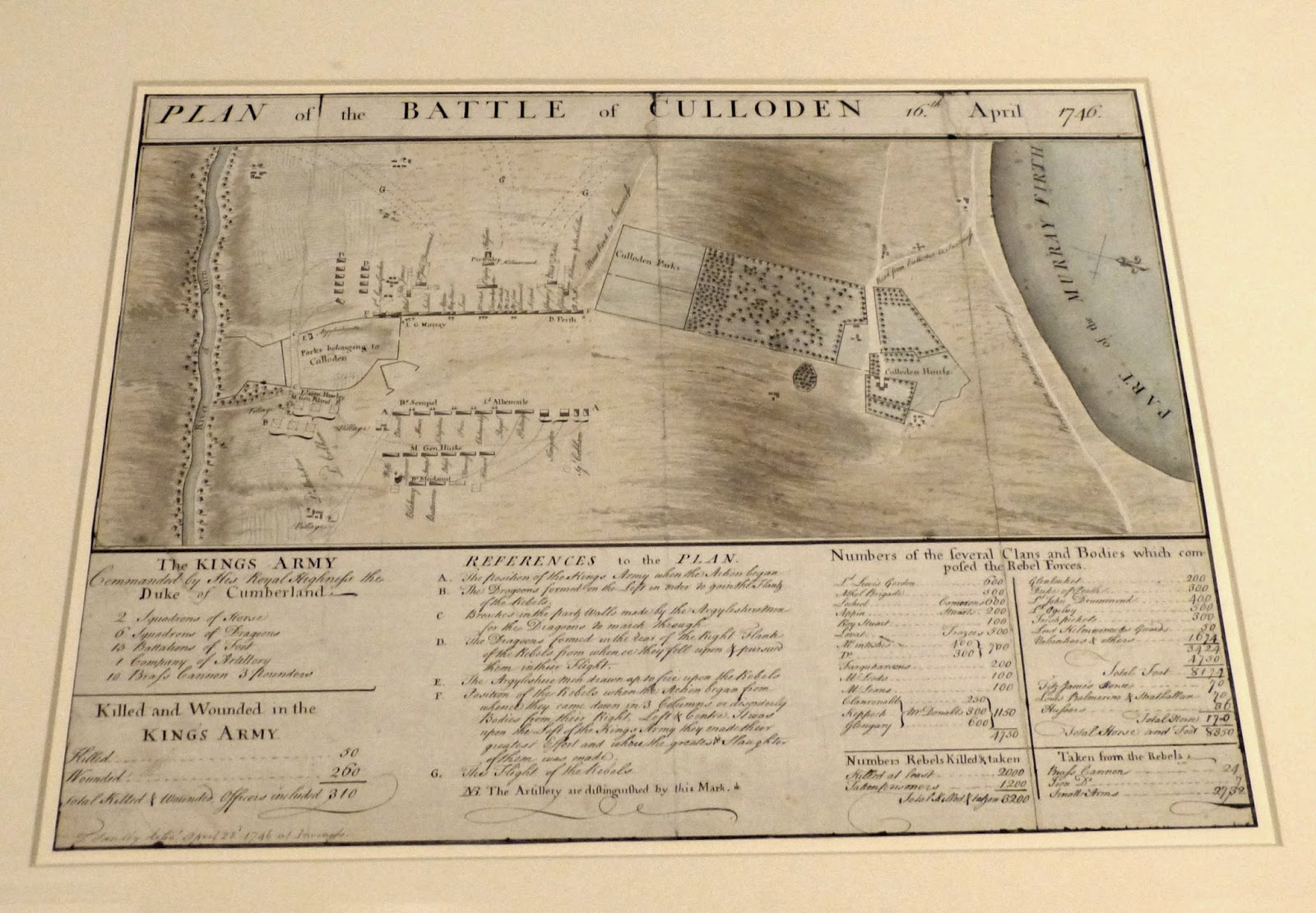 |
Sir Richard Colt Hoare - a painting at Stourhead (2014)
|
Profile
Sir Richard Colt Hoare (9 December 1758 – 19 May 1838) was an antiquarian and historian and the owner of the Stourhead estate in Wiltshire.
Family background
Richard Colt Hoare was born in Barnes, Surrey, on 9 December 1758, the eldest son of Sir Richard Hoare, 1st Baronet, who had married his first cousin, Anne Hoare, the younger daughter of Henry Hoare of Stourhead, senior partner of Hoare’s Bank. Richard’s mother died when he was six months old and his father remarried. He had six children by his second wife, Frances Acland, and Richard grew up with his half-siblings in Surrey.
Hoare's Bank
Richard pursued his classical studies with a tutor whilst training for a role in the family business, Hoare’s Bank. His grandfather, known as ‘Henry the Magnificent’, gave him a house in Lincoln’s Inn Fields and an allowance of £2,000 a year when he came of age.
Marriage
On 18 August 1783, Richard married Hester Lyttelton, daughter of William Lyttelton of Hagley, 1st Baron Lyttelton. They had one son, Henry, on 17 September 1784, but tragically, Hester died the following year, on 22 August 1785.
Grand Tour
Shortly after the death of his wife, Richard inherited Stourhead from his grandfather, Henry Hoare, on the condition that he left the bank. Henry made this stipulation to ensure the survival of the Stourhead estate in the event that the bank should fail in the future.
 |
| Stourhead |
Deprived of both wife and career, Richard went on a
Grand Tour, and for the next six years, he travelled extensively abroad, keeping detailed diaries. These were later published in
Recollections abroad: journals of tours on the continent, 1785-1791 (1815-18). He subsequently toured throughout Britain and Ireland, recording his travels with the same meticulous detail.
Antiquarian
Richard was very interested in the history and archaeology of Wiltshire and amassed a huge collection of books and drawings. He was the author of The Ancient History of South Wiltshire (1812, 1819) and wrote the majority of The History of Modern Wiltshire (1822-44).
He was elected a fellow of the Society of Antiquaries and admitted to the
Society of Dilettanti in 1792. In 1825, he gave his collection of Italian topographical and historical works to the
British Museum.
Sportsman
Richard was a keen sportsman and bought a fishing lodge in Bala in Gwynedd, Wales, in 1796. He also had a house in St James’s Square, London.
Stourhead
 |
The Temple of Apollo in the gardens at Stourhead (2014)
|
Richard developed the gardens at Stourhead, planting trees and collecting exotic plants, leading to his election as a member of the Linnean Society in 1812.
Finding that the house at Stourhead did not have enough room for his collections, in 1800 he added two wings, one for the Library to house his books and the other the Picture Gallery to display his paintings.1
 |
Richard Colt Hoare in his Library at Stourhead (Photo 2014)
|
Patron of the arts
 |
Chippendale chairs in the Picture Room, Stourhead (2014)
|
Between 1798 and 1820, Richard employed Thomas Chippendale the Younger to make furnishings for Stourhead to the value of around £3,500. Chippendale’s work included furniture for Richard’s two new rooms, some pieces in the Egyptian style and others in an advanced Grecian taste.
 |
Sarcophagus planter by Chippendale in the Picture Room, Stourhead (2014)
|
Richard commissioned works from the water-colourist Francis Nicholson, the portrait artist Samuel Woodforde and JMW Turner.
An unsatisfactory son
The relationship between Richard and his son Henry was very strained. Henry was devoted to a life of pleasure and his father was left to settle his debts. Henry died in 1836 leaving one daughter, Ann.
Illness and death
Richard suffered from gout and rheumatism and became increasingly deaf. He lived mainly at Stourhead with occasional visits to Bath. He died on 19 May 1838 at Stourhead and was buried at St Peter’s, Stourton. There is a marble statue to his memory in Salisbury Cathedral.
 |
Salisbury Cathedral (2014)
|
Rachel Knowles writes faith-based Regency romance and historical non-fiction. She has been sharing her research on this blog since 2011. Rachel lives in the beautiful Georgian seaside town of Weymouth, Dorset, on the south coast of England, with her husband, Andrew.
Find out more about Rachel's books and sign up for her newsletter here.
If you have enjoyed this blog and want to encourage me and help me to keep making my research freely available, please buy me a virtual cup of coffee by clicking the button below.
Note
(1) These were the only rooms to escape the fire which devastated the house at Stourhead in 1902.
Sources used include:
Hutchings, Victoria, Hoare, Henry (1705-1785) Oxford Dictionary of National Biography (Oxford University Press, 2004; online edn May 2009; accessed 15 May 2014)
Hutchings, Victoria, Hoare, Sir Richard Colt (1758-1838) Oxford Dictionary of National Biography (Oxford University Press, 2004; online edn May 2009; accessed 15 May 2014)
Lomax, James, Chippendale, Thomas (bap 1718, d1779) Oxford Dictionary of National Biography (Oxford University Press, 2004; online edn May 2009, accessed 22 May 2014)
Blog update (May 2014)
Whilst researching a post on some paintings at Stourhead for my newsletter, I discovered that the painting which I had previously labelled as Hester Lyttelton, Sir Richard Colt Hoare's wife, was in fact of NOT of her at all!
 |
Probably Mrs John O'Neill -
a painting at Stourhead (2014)
| | | |
All photographs © Andrew Knowles - RegencyHistory.net



































